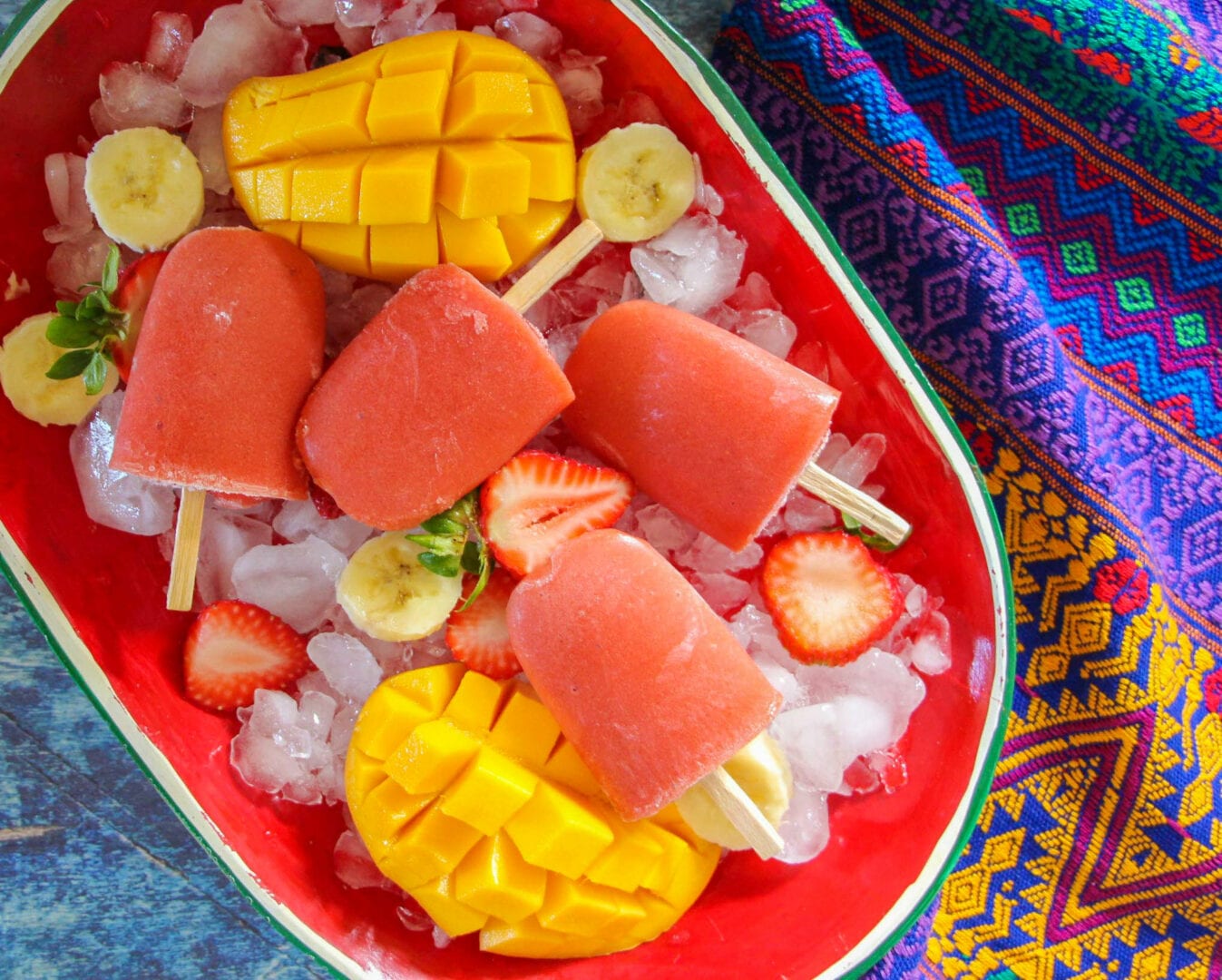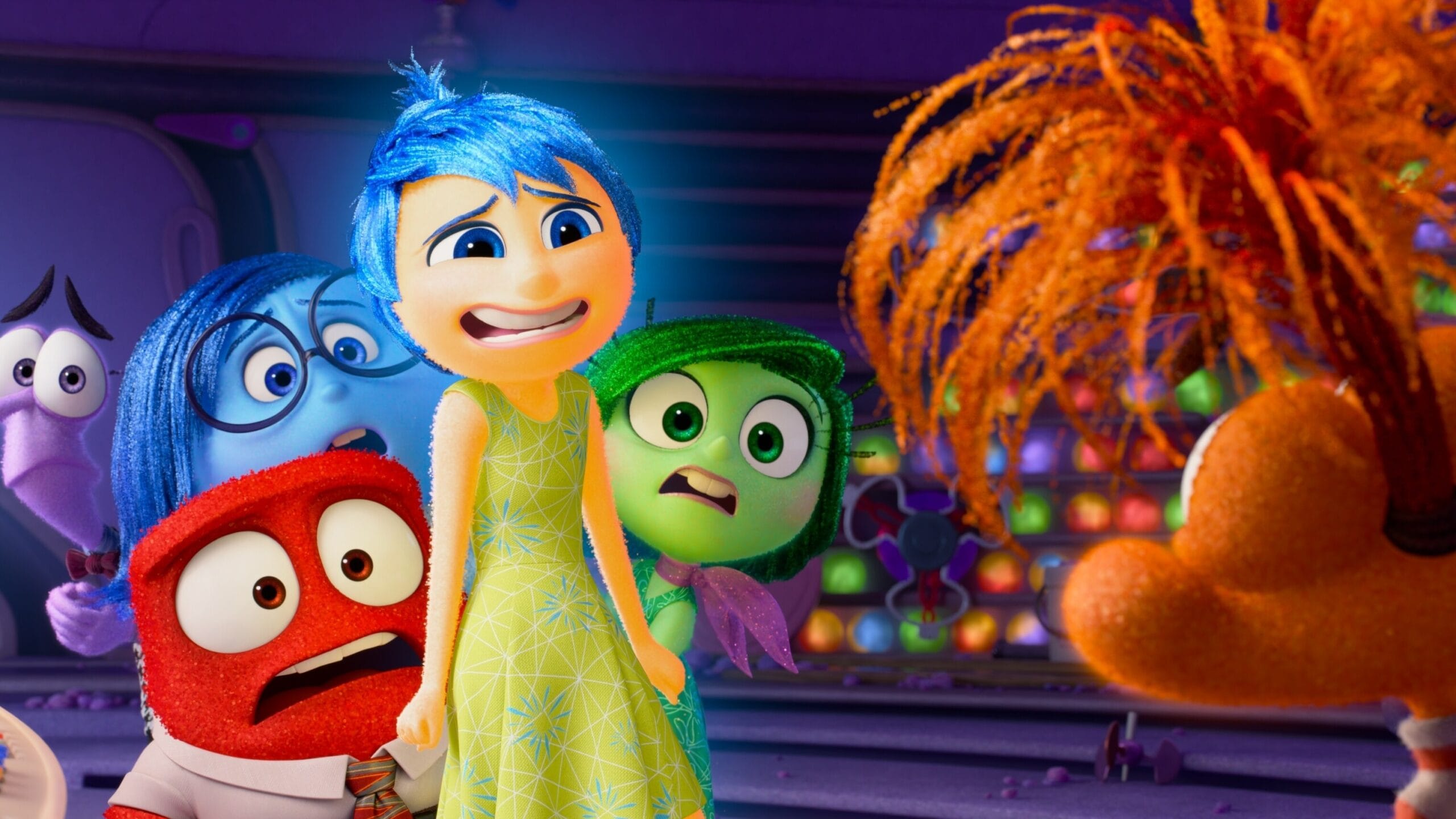Every fall from September 15th through October 15th, it’s National Hispanic Heritage Month — a time to celebrate the culture and achievements of Latinx individuals and communities hailing from Latin America. For those of us who are part of the community, it’s a nice time to reconnect with our heritage — especially with our children. For others, it’s a welcome opportunity to broaden horizons and teach kids (and their grown-ups) about lesser known aspects of our cultura.
While we still refer to the month as Hispanic Heritage Month, it is also referred to as Latinx Heritage Month, Latino Heritage Month, and Latine Heritage Month by many others, from the NY Public Library to the National Center for Civil and Human Rights and beyond. There are a number of reasons for this (a deeper dive into this at bottom). Keep this in mind as you research more about what this month means and how to celebrate it in a fun and respectful way.
In this article, we’ll help explain Hispanic Heritage Month for kids and also provide some fun activities to help celebrate this month.
What is Hispanic Heritage Month and why is it celebrated?
On September 17, 1968, President Lyndon B. Johnson signed a bill into law signifying the creation of National Hispanic Heritage Week to publicly acknowledge the contributions of Hispanic Americans. By 1987, it was clear we needed and deserved more time and recognition, and Representative Esteban Torres of California submitted a bill to expand it into Hispanic Heritage Month (but it didn’t get signed into law until a different senator wrote a similar bill, which was signed into law the following year). We continue to observe it today not only because our contributions and accomplishments are worth celebrating, but also due to the fact that there is still so much work to be done to do away with the systemic racism and oppression Latinxs continue to face in this country. Celebrating is just one of many ways to do this.
Why is September 15th Hispanic Heritage Month?
September 15th was chosen as the start of HHM due to the fact that many Latin American nations celebrate their independence day around the same time. The 15th marks the independence of Nicaragua, Guatemala, Honduras, El Salvador and Costa Rica while Mexico celebrates theirs the following day and Chile observes theirs on the 18th. HHM ends on the 15th of October, just a few days after Día de la Raza (celebrated on the 12th).
What is the theme for Hispanic Heritage Month 2023?
According to the Department of Education, this year’s HHM theme is “Building Prosperous and Healthy Communities.” Each week will have a theme to explore, including “Jobs and the Economy,” “Climate,” “Education and Investing in HSIs (Hispanic Serving Institutions)” and “Mental Health and Wellness.”
Try these Hispanic Heritage Month activities for kids (and adults)
Below, you’ll find a number of activities to get you started festejando National Hispanic Heritage Month (NHHM) for kids:
1. Discover culture through art
Visit a Latinx museum or exhibition
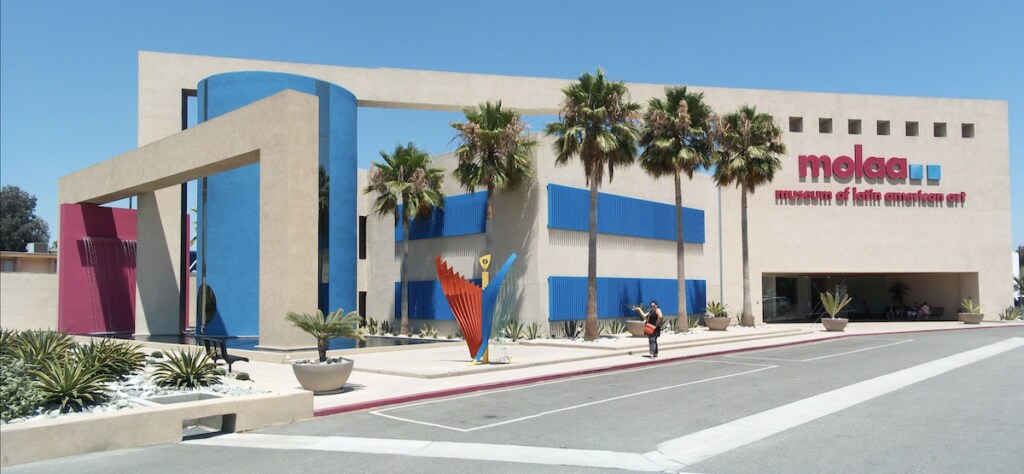
Art is an excellent lens through which to explore another’s heritage, and a trip to a local museum, for example, is just one of many excellent ways in which to learn more about Latinidad. Hop onto Google and see if there are any Latinx-centric museums in your neighborhood like Denver’s Museo de las Americas, the Museum of Latin American Art in Long Beach, the National Museum of Mexican Art in Chicago, NYC’s El Museo del Barrio and El Museo Latino in Omaha.
Even if you don’t live near one of these museums, many art and history museums will still have exhibitions on display specifically for NHHM 2023. Look into the museums near you. Then take a trip with the kids so they might learn more about our famous artists like Frida Kahlo and Ana Mendieta, and find out more about our culture on the whole.
Try a fun DIY craft (and then TikTok it!)
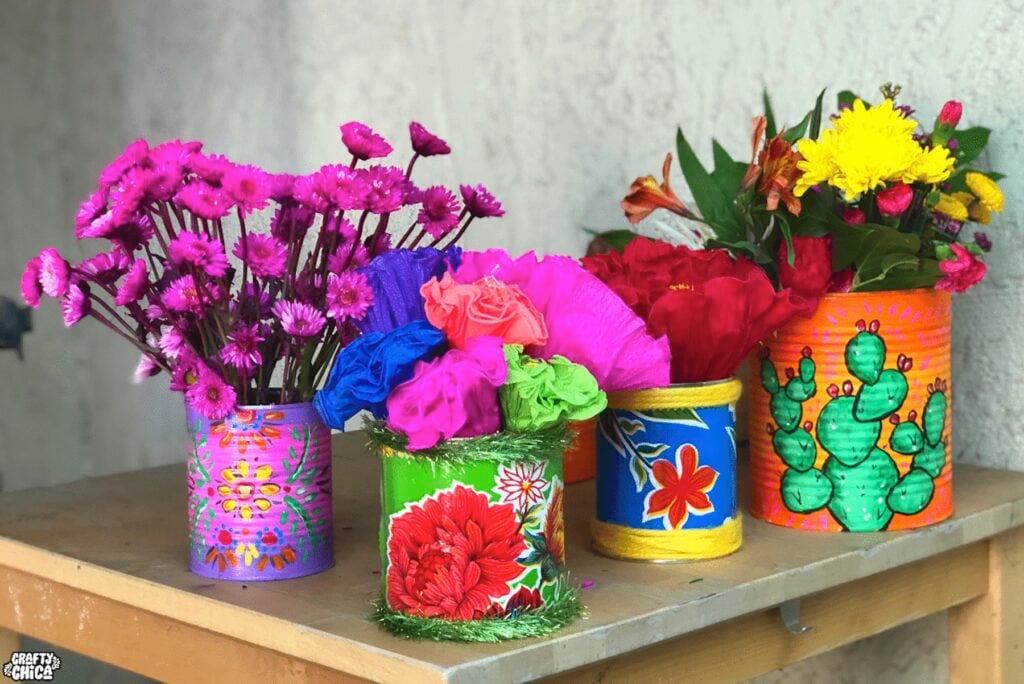
Crafting is another fun, immersive way to get to know more about a culture — and artesanías are a huge part of ours! If you’re not sure where to start, check out Kathy Cano-Murillo’s site The Crafty Chica. A popular Mexican-American crafter, author and influencer, Cano-Murillo offers DIY instructions for a number of crafts, from painted tins cans (image above), faux pan dulce (image below) and Mexican embroidery murals to stamped clay plates, Day of the Dead ofrendas and more.
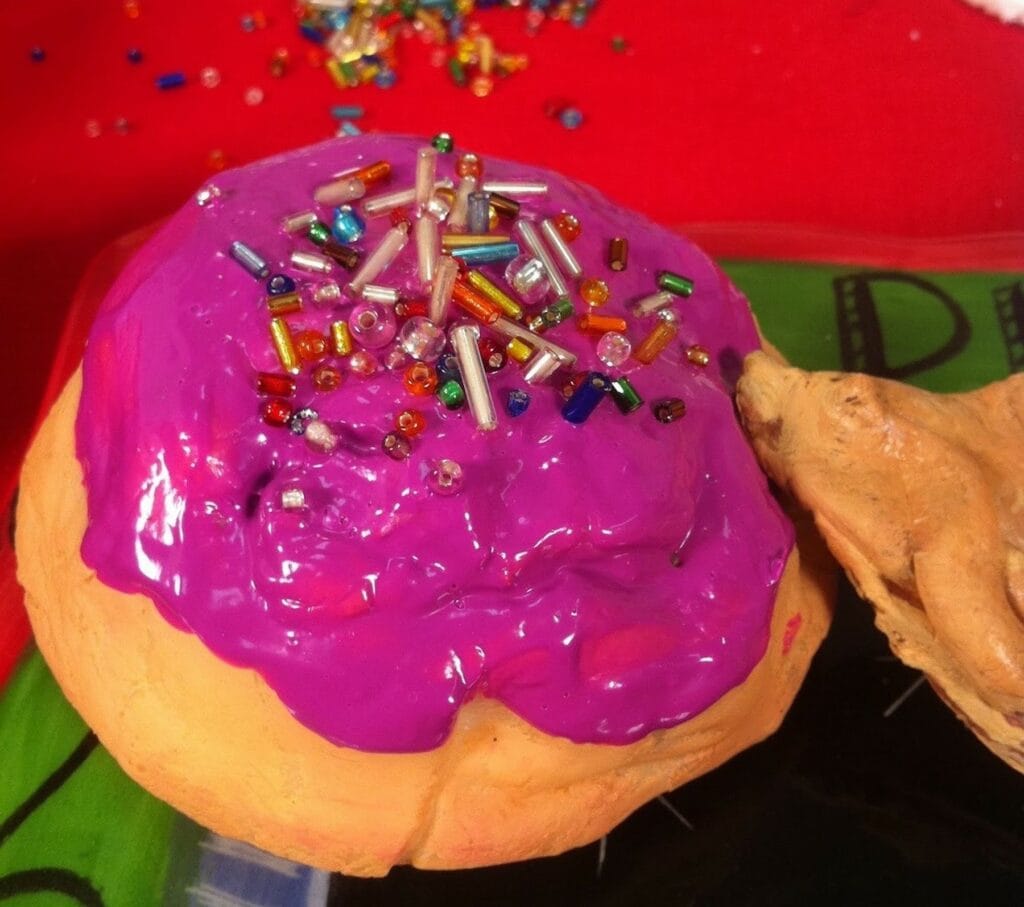
You can even have kids follow along and make TikToks out of their Hispanic Heritage activities and tag the Crafty Chica herself! If you need additional help, Cano-Murillo also has plenty of books (many of which are for craft making) available for purchase so you can learn even more unique Latinx-inspired crafts!
For more Latinx craft inspiration, families can follow Lucia Maella DIY and La Catrinita Crafts, or look for hashtags like #latinxcrafts and #latinacrafters.
2. Take literary adventures
Fill your bookshelves with Latinx authors

While kiddos might not be entirely ready to read the works of Latinx authors like Isabelle Allende, Gabriel García Márquez and the like, they can certainly read other books that explore our culture. Challenge children to find Latinx authors on library or bookstore shelves (or even Little Free Libraries if there are any in your area!), and then make a list of books to check out or buy and read at home. Additionally, kids can check out Epic Books online, seek our read aloud videos on YouTube, or download the Libby app for their local library to access e-books and audiobooks.
Kids can learn about important Latinx figures by reading:
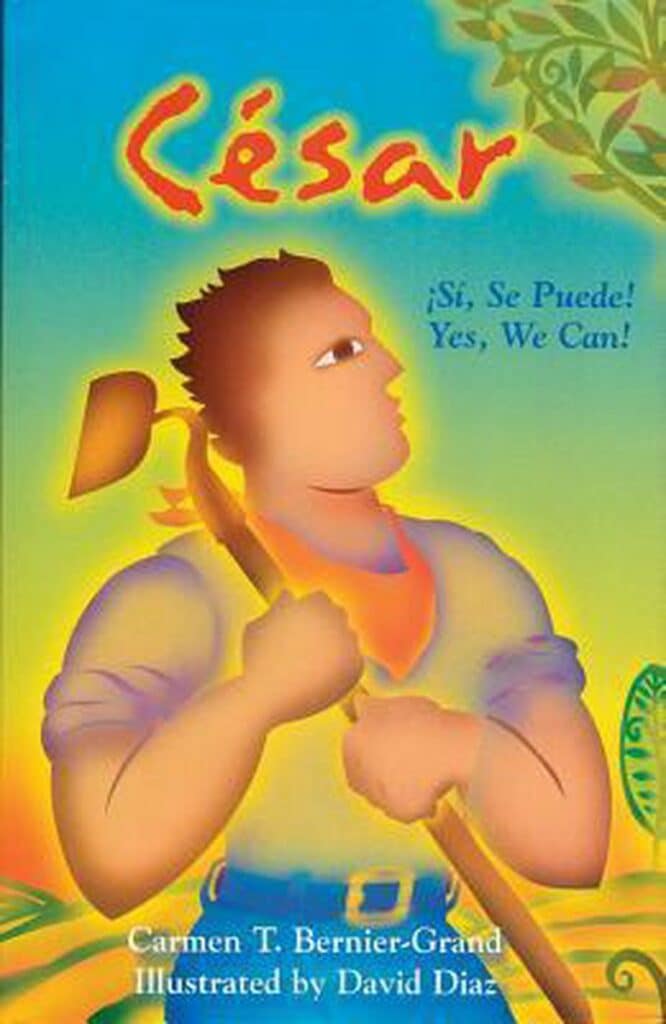
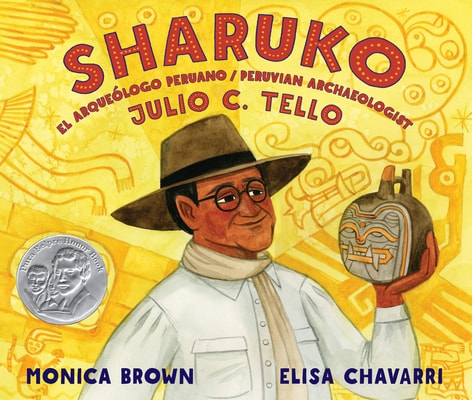
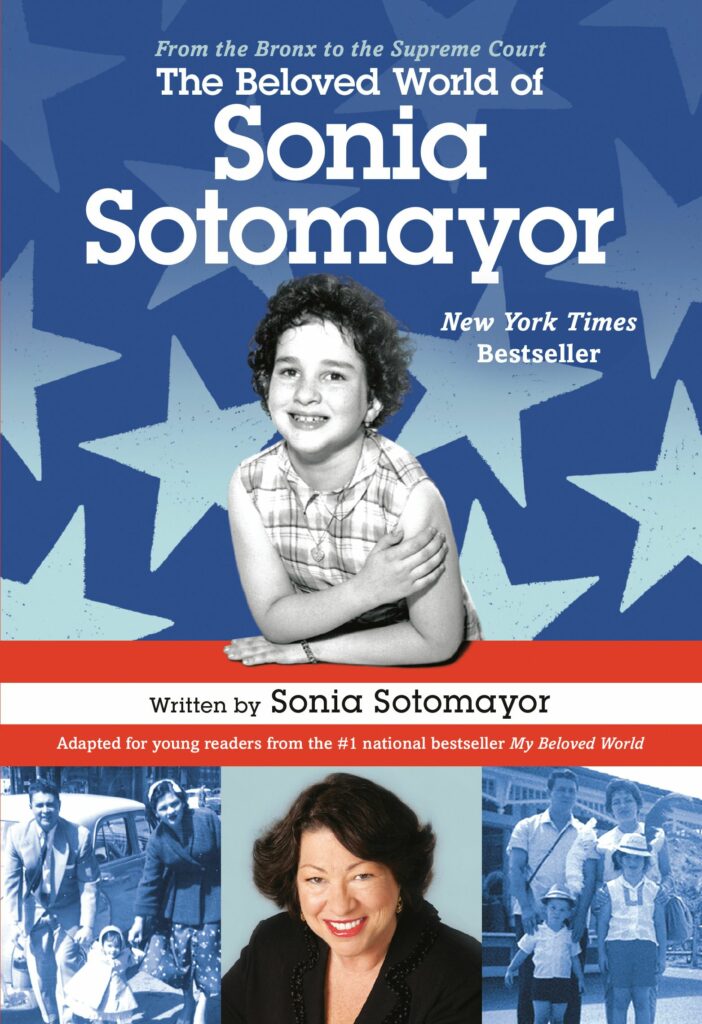
- “César: ¡Sí, Se Puede! Yes, We Can!” by Carmen T. Bernier-Grand about Chicano activist Cesar Chavez.
- “Sharuko: El Arqueólogo Peruano Julio C. Tello” by Elisa Chavarri and Monica Brown about the famed Peruvian archaeologist.
- “The Beloved World of Sonia Sotomayor” written by the Supreme Court Justice herself.
Or simply enjoy other books by Latinx authors, such as:
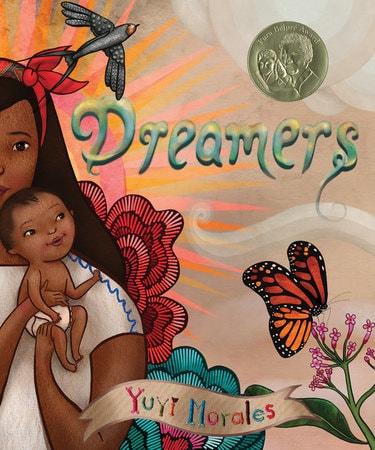
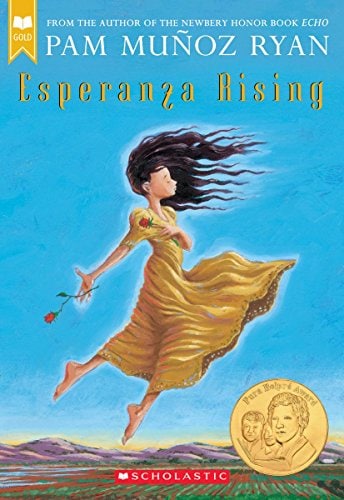
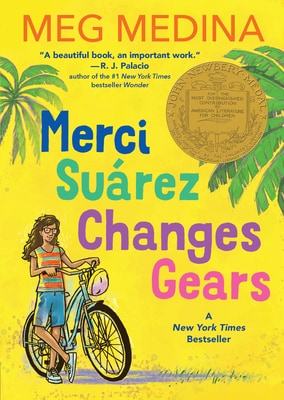
- Yuyi Morales’ “Dreamers.”
- Pam Muñoz Ryan’s “Esperanza Rising.”
- Meg Medina’s “Merci Suárez Changes Gears.”
Visit your local library
Speaking of libraries, they aren’t just excellent places to go and pick up new books, they also often host fun NHHM activities for the whole community. Visit your local library and check out their HHM display for reading suggestions, or simply ask your librarian if they are offering any additional HHM programming.
For example, the San Diego Public Library System will host a number of events from Ballet Folklorico dance lessons for kids and a “Selena” movie watch party to craft lessons for mini piñatas and other goodies. Denver Public Libraries also have an array of events all month long, including a papel picado workshop and family lotería nights. And over at the LA County Libraries, folks are welcome to attend virtual and in-person events, including a self-portrait workshop inspired by the work of Frida Kahlo. Pop into your local library this month to find out what’s happening in your neighborhood and for more ideas on celebrating National Hispanic Heritage Month for kids.
3. Enjoy cultural celebrations and festivals
There are some epic celebrations that happen annually across the country for Hispanic Heritage Month that are often free for families to check out and enjoy. Most major cities host festivities, from Seattle’s Sea Mar Fiestas Patrias and D.C.’s multi-day Latino Heritage Festival to Fiesta Birmingham (Alabama’s largest celebration of Latinx culture).
But it’s not just the larger cities doing this. For example, Red Wing, Minnesota is hosting a Hispanic Heritage Festival on September 9th, Greenville, South Carolina will host their 24th annual HHM Fest on October 1st, and Riverdale, Maryland’s Parks and Rec is having its own festivities on September 17th.
Simply Google “Hispanic Heritage Month events” and your city or town’s name and you’re sure to find some events nearby where you’ll get the chance to hear music, taste yummy food, and learn more about Latinidad.
4. Explore holidays and history and changemakers
Learn about Latin American holidays together
September 15th marks the day of independence for a number of Latin American. Take some time to teach kids about why this day (and other Latin American independence days) are so important and how each country celebrates.
You can also read books and watch videos about other Latin American holidays, like Las Fiestas Patronales in Puerto Rico and Mexico’s La Batalla de Puebla (also known here as Cinco de Mayo). Kids can also enjoy learning about Dia de los Muertos — a two-part holiday celebrated not only in Mexico but also Ecuador, Guatemala and other nations. Since it occurs shortly after HHM, families can even look into learning how to create altars for their deceased, a project that can be worked on together for the weeks leading up to the holiday.
Turn research into knowledge and fun
Additionally, have your kids read about and research an important historical figure (or two) from Latin America, or from the Latinx diaspora. Some ideas could include famous Latino astronaut José M Hernández (the subject of the upcoming film “A Million Miles Away”), journalist and broadcaster María Elena Salina or labor activist Dolores Huerta. The below TikTok from Miami mom and teacher Mrs. Brito (aka, @_mrs_brito_ on TikTok) offers a fun way for kids to do this by turning cereal boxes into an arts and crafts project as well as a research project.
5. Cook up cultural delights
What better way to find what you love about other cultures and countries is there than by tasting the local cuisine? While it may not always be possible to actually fly out to taste some dishes, you can always go online or grab a cookbook and test out a new recipe.
Try Mexican cooking blogger Dolores Wiarco Dweck of Lola’s Cocina’s kid-approved recipe for strawberry, mango, banana paletas — Mexican-style sweet treats the whole family will love. Lola also shares plenty of other easy-to-follow recipes like elote (Mexican street corn and agua fresca de avena (a style of oat milk). Make sure to check out her workshops (including virtual) for additional instruction (you can even find some past ones on YouTube).
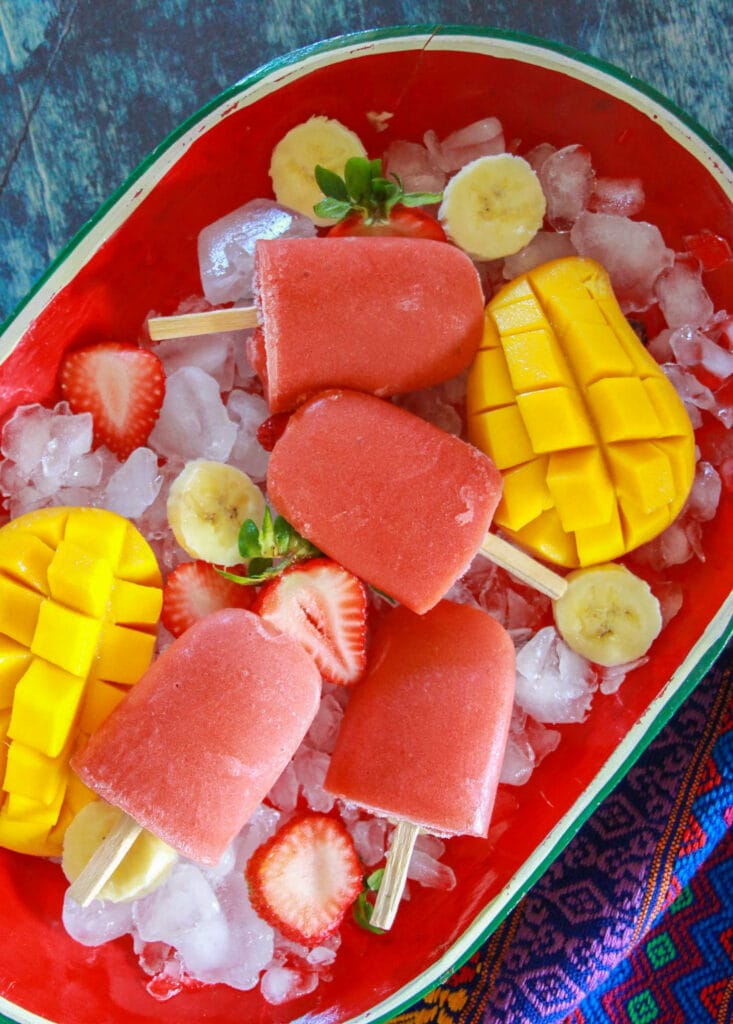
If kids want to explore beyond Mexican cooking for NHHM, feel free to scour the web for other ideas, like bean and cheese pupusas (a staple in Salvadoran and Honduran cooking) or pan de bono (Colombian cheese bread). If you’d much prefer to just sample different foods, however, feel free to order out from various Mexican, Caribbean and Central and South American restaurants in your neighborhood.
6. Explore Latin American and Latinx music and dance
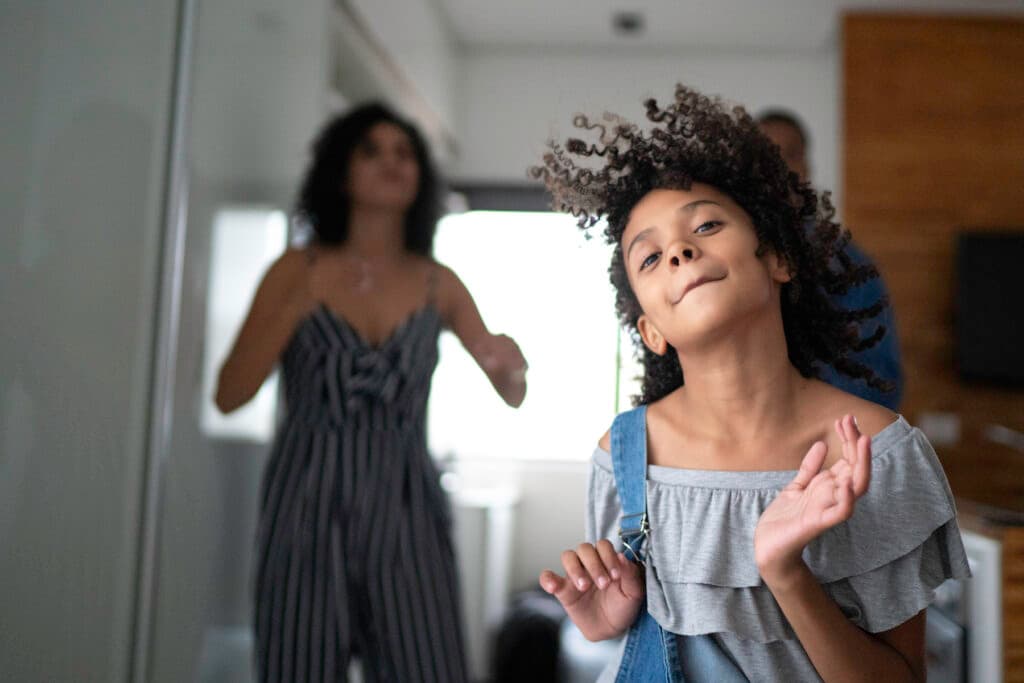
Make a playlist
No doubt music is another special way to connect with a culture, and kids will jump at the chance to discover playlists and create their own featuring Latin American and Latinx musicians during NHHM. Ask kids which medium they prefer to use — Spotify has some easy playlist-making capabilities, but they can also make one via YouTube or other services (or if you want to go old school you can teach them how to make mix CDs or mixtapes!)
Next, help them look at various artists, keeping their musical preferences in mind. From Chavela Vargas and Celia Cruz, to Bad Bunny and J Balvin, to Gloria Estefan, Amara La Negra and Cardi B, they’ll come up with some creative mixes to listen to all month long — and beyond.
Once a playlist is made, there’s an excellent chance kiddos might begin to feel their own hips sway to the beat. Not surprising as dance is a huge part of our culture.
Try a dance lesson for kids
Many folks tend to think of salsa first as a Latinx dance — and they wouldn’t be wrong. Salsa is certainly one of the most popular styles, and odds are you won’t struggle to find a salsa class near you. But if you’ve got more options, consider checking out other styles as well, including merengue, cumbia, bachata, bomba and, of course, tango.
You can find a variety of dance tutorials on YouTube, including:
No matter which style you choose to explore, this is a solid way to celebrate Hispanic Heritage Month for kids.
7. Brush up on your Spanish, Portuguese or other Latin American language
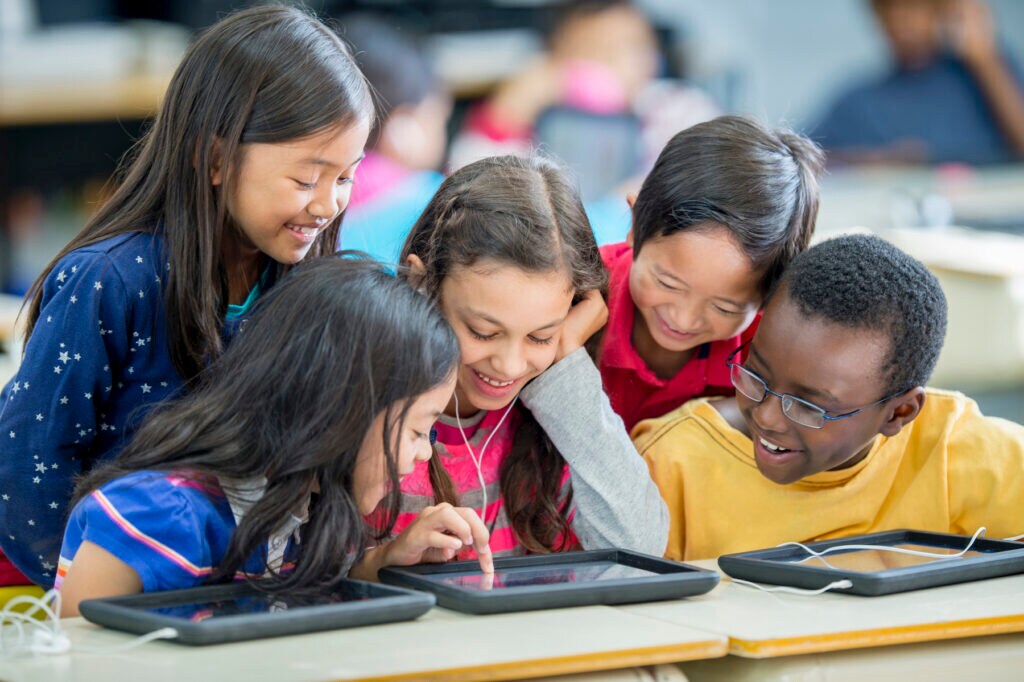
While not all Latinx folks speak Spanish, there’s no doubt that the language heavily influences much of our culture. Plus, Spanish is the second most common language spoken in the U.S., so it’s really a win-win for kids to learn at least some conversational skills.
Alternately, you can also encourage kiddos to learn Brazilian Portuguese, which is spoken by over 211 million individuals in Brazil, not to mention 693,000 speakers here in the United States. Moreover, many Latin folks are starting to show more interest in learning the indigenous languages of their homelands, including Nauhatl, Quechua and Mayan languages. This can especially help children with indigenous heritage connect to that part of their roots.
Encourage kids to work on becoming bilingual (or even multilingual):
- Sign up for language learning apps like Duolingo, more immersive programs like Rosetta Stone or classes with a live instructor via sites like Preply.
- Hire a bilingual babysitter or bilingual nanny who’s willing to practice conversational Spanish or Portuguese with kids.
For kids and their friends, it could be fun to even start up a Language Club after school for practicing their skills.
8. Cue up Latinx entertainment
Tune in through TV and movies
Television and movies have always been great mediums for getting a glimpse into the lives of others, and during NHHM, you can totally put your focus on Latinx and Latin American shows and films to do just that.
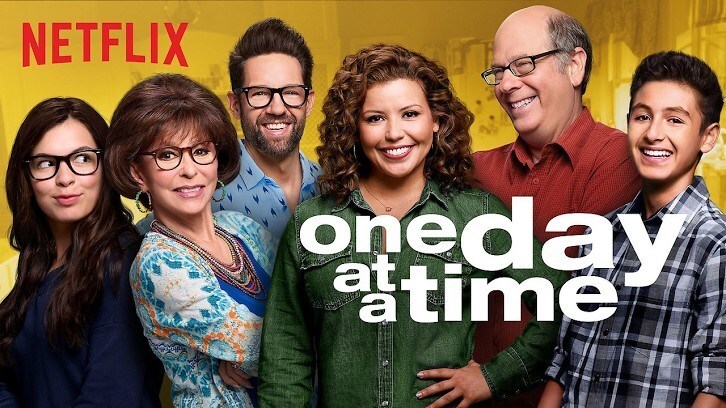
Binge a family-favorite like the “One Day at a Time” reboot, about a Cuban-American family that offers plenty of laughs, or learn about Latin culture by way of a docu-series like “Street Food: Latin America” or “15 – A Quinceañera Story”. You can also host a movie night with friends with Latinx films like Disney’s “Coco” and “Encanto,” plus Latin American films such as “La Leyenda de la Llorona” and “Anina.” Afterward, have a discussion about anything you may have learned about the particular culture(s) depicted.
Where to stream:
- “One Day at a Time” on Netflix.
- “Street Food: Latin America” on Netflix.
- “Coco” on Disney+.
- “Encanto” on Disney+.
- “The Book of Life” on Max.
- 15 – A Quinceanera Story on Max.
- “La Leyenda de la Llorona” on Amazon Prime.
- “Anina” on Amazon Prime.
Check out popular Latin American sports

If your family tends to enjoy watching sports together, they might also want to consider watching a game of futbol (soccer). Played the world over, no one can deny futbol’s extreme popularity and influence in Latin America. Watching a game on television or at a live match is a great way for kids to experience the excitement of the game themselves. Kids can also learn about famous Latinx futbol players by reading books, magazines or articles online to find out more about their lives.
“Using soccer players like Javier ‘Chicharito’ Hernandez or Messi helps students to see how successful they can be,” says Michelle Huitink, a Latina English teacher based in Los Angeles who bridges soccer with Latin American history in her classroom. “They have very idealistic views of these professional players, so I tell them to get on that level, they have to practice just as these players do, that these players are good because of how hard they work.”
You can also teach them about other sports that are popular in Latin America, including baseball and jai alai (also known as basque pelota).
9. Get involved in community and service
If you do a little internet research, no doubt you’ll be able to find a local community center or Latinx-serving nonprofit organization in your area that you can introduce your kids to. For Latinx families, consider visiting an organization like the Latin American Youth Center (with locations in DC and Maryland) and see what types of services your kids could sign up for. The LAYC, for example, is home to 50 different programs, from art and music classes to school tutoring and more. This can help your kids not only receive fun, enriching experiences but also find community among other Latinx kids.
Those who are non-Latinx can still find ways to support these organizations while continuing to center the Latinx folks they are meant to serve.
For younger kiddos, or those unable to volunteer in person, consider ways to contribute from home as a family. Can they host a lemonade or bake sale, help you set up a garage sale, or simply ask folks in their community to donate funds to a local or national Hispanic-serving organization? The Latin American Association in Georgia offers opportunities for volunteering by way of hosting canned food and diaper drives, as well as making homeless care packages and new Georgian or asylum-seeker kits they can distribute to immigrant communities.
10. Have a geography lesson

Most people know how to spot Mexico and Brazil on a globe, but how about Belize? Or Ecuador? Or Nicaragua? Teach (or learn with) your kids about the different nations of Central and South America by studying globes and maps, reading books, using flash cards or watching educational videos like this “All About South America for Kids” one (the “All About North America for Kids” video, includes Central America, too). You can also print out maps for kids to fill in and color for a more interactive lesson. If your kids enjoy online games, you can also visit the website Sporcle, which houses numerous geography games where kids can learn the names and locations of Central and South American countries, as well as learn the flags and capitals of these countries.
11. Host a Latin American game night
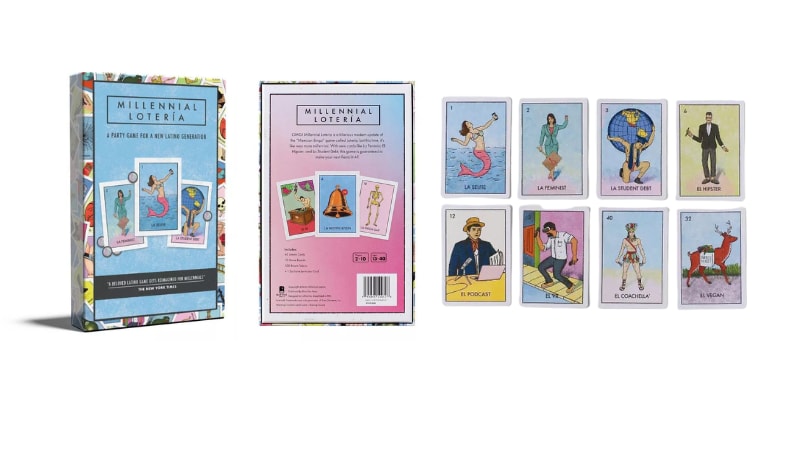
Similar to bingo, but at least in my opinion, way more fun, is the game of lotería. A popular activity in Mexico and among some other Latin American diaspora, each player gets a tabla (akin to a bingo card) and one individual draws cards from a pile, calling out different images. If the image matches one on your tabla, you put a coin, dry bean or other small object on it until you fill out your card.
While the game was brought over to the Americas from Italy, it became popularized by Don Clemente Jacques, whose images have become the standard found on most lotería cards (although older tweens and teens might also enjoy checking out “Millennial Lotería” or the new Gen Z version, created by Mike Alfaro). It’s a great way to experience Latinx culture, while also learning some Spanish words along the way (as card images include everything from “La Sandia,” “El Tambor,” “El Paraguas,” “La Dama” and more).
Another popular Latin American game you can play is dominos. While it’s believed to have originated in China, the game has become exceptionally popular among Latinxs, especially those from the Caribbean. There are a number of ways to play the game, so seek out a few options online and get started (you can use this tutorial for how to play Dominican style for a fairly simple introduction).
Where to buy: Millennial Loteria: Family Fiesta Edition or Gen Z Edition ($20, Target)
12. Support a Latinx-owned, family-friendly business
Finally, you can never go wrong with supporting a Latinx-owned business. Start by looking into your own community. Ask in your local social media parenting groups and see if anyone has recommendations. Restaurants and cafes are generally a good place to start, but look into bookstores, clothing boutiques, toy stores, gift shops and more. Then have a “field trip” with your kiddo to visit the establishment, maybe pick up some goodies for them (or yourself!), and if there are any culturally-specific items, feel free to ask the business owners questions to help educate yourself and your child on what they are.
Here are a few Latinx-owned small businesses we found that might be in your area:
- Aquarela Gifts and Flowers (Monrovia, CA).
- The Wild Detectives Bookstore (Dallas, TX).
- Amor Collective – featuring 20 Latina-owned businesses (Peoria, AZ).
- Mi Cultura Giftshop (Riverside, CA).
- Cultura Chocolate – craft chocolate shop (Denver, CO).
You can also go online and shop for Latinx-made goods for your child and your household. Here are a few Latinx-owned online shops to consider:
- Lil Libros (children’s books).
- Siempre Viva (dolls).
- Pequeñas Manos (baby clothing).
- Oh Comadre Candles (candles).
- Shop Chapilinda (clothings, accessories, and gifts).
- Blank Tag Co. (stickers).
A note on cultural identity terminology
Because the terminology around one’s cultural identity is not fixed for every person, this celebratory month may be referred to a Hispanic Heritage Month, Latinx Heritage Month, Latino Heritage Month and Latine Heritage Month for a variety of reasons. For example, Hispanic refers to individuals from Spanish-speaking nations in Latin America and the Caribbean, as well as individuals from Spain. This excludes non-Spanish speaking populations in Latin America, like Brazil, as well as non-Spanish speaking Indigenous people from Latin America. Due to the term’s roots in Spain’s colonization of the Americas, many prefer to use Latino or some variation of the term (such as Latinx, Latine and Latinx, which help center Indigenous and Black/Afro-Latinx individuals). These gender-neutral variations are preferred by many, including those in the LGBTQIA+ community and their allies. The move toward these variations, however, has caused controversy and division among which term is “best,” causing some to go so far as to prompt people (including non-Hispanic/Latinx people) to try and ban it altogether.
Overall, it’s important to understand that:
- The Latin American diaspora are not a monolith.
- No one is forcing anyone to change what they call themselves.
- People who belong to the diaspora are allowed to use whichever term feels best for them.
